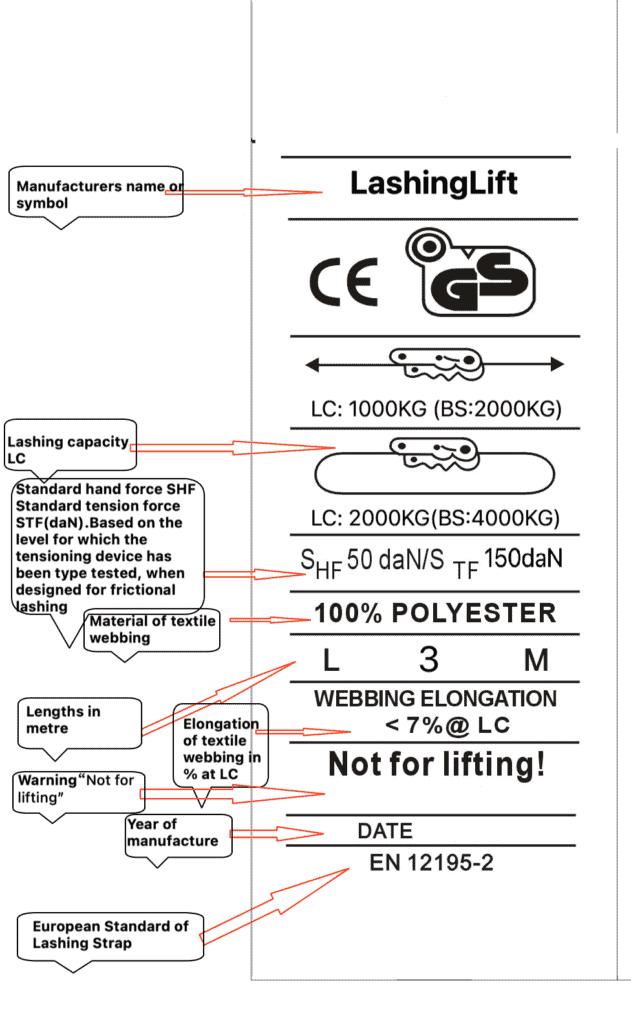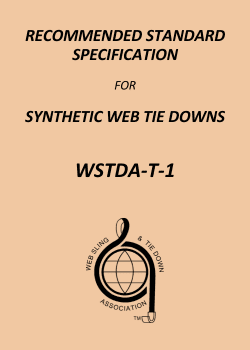In logistics and cargo transportation, ensuring the safe fixing of cargo is of vital importance. Lashing straps are commonly used fixing tools, but their quality and safety depend on the standards they follow. EN 12195-2 and WSTDA-T-1 are two widely used lashing strap safety standards around the world. This article will analyze the key differences between these two standards in depth to help you choose the lashing strap that best suits your needs.
What is the EN12195-2 standard?

EN 12195-2 is a European standard specifying the safety requirements and testing methods for lashing straps used to secure cargo during transportation. This standard ensures that the lashing straps are reliable and safe for use in various transport conditions, thereby preventing accidents and ensuring the stability of the cargo.
What is the WSTDA-T-1 standard?

WSTDA-T-1 is an American standard established by the Web Sling & Tie Down Association (WSTDA) that sets the safety and performance requirements for synthetic web tie-downs, commonly known as lashing straps. This standard ensures that these tie-downs are suitable for securing cargo during transport, thereby promoting safety and preventing accidents.
Key differences between EN 12195-2 and WSTDA-T-1
This table highlights the key differences between the EN 12195-2 and WSTDA-T-1 standards, covering aspects such as geographical applicability, issuing organization, testing and certification requirements, labeling, safety factors, performance testing, application areas, and standard numbers.
| Attribute | EN12195-2 | WSTDA-T-1 |
| Geographical | Europe | United States |
| Issuing Organization | European committee for standardization(CEN) | Web Sling&Tie Down Association(WSTDA) |
| Testing and certification | Must be tested by a third-party certification | Allows manufacturer self-certification |
| Labeling and Identification | Permanent labels indicating WLL, breaking strength, manufacturer, production date, and standard number | Permanent labels indicating rated capacity, breaking strength, manufacturer, production date, and standard number |
| Safety factor | 2:1 | 3:1 |
| Performance Testing | Specifies testing methods and requirements for tensile strength, abrasion resistance, UV resistance, etc. | Specifies physical and mechanical performance tests such as tensile and abrasion tests |
| Label Requirements | Emphasizes clear, easily readable, and permanently attached labels | Emphasizes completeness of label information and permanent attachment |
| Application Areas | Primarily for the European market, for cargo transport, and securing | Primarily for U.S. MARKET, FOR Synthetic web tie-downs |
Conclusion
Whether it is EN 12195-2 or WSTDA-T-1, choosing lashing straps that meet the standards is essential to ensure the safety of cargo transportation. Understanding the key differences between the two standards can help you make wise purchasing decisions in the global market and ensure that your cargo is always safe and secure.